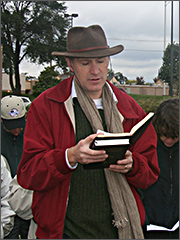
Though author Alana Massey makes no secret of her pro-choice position, the piece is fairly even-handed, and I’m grateful for that. I spent nearly an hour on the phone with Massey being interviewed for the story, and she’s kind enough to call me “an exceedingly gracious person.”
For my part, I enjoyed our conversation and look forward to contributing to Massey’s writing on the abortion issue in the future. In fact, I would say that our exchange was marked by the same spirit of sincerity that inspired the League’s controversial prayer campaign.
Massey herself doesn’t quite seem to believe that harassment is our real purpose. She seems more inclined to regard it as misguided or even reckless, given the “history of anti-abortion violence” the article chronicles.
Many other advocates of legal abortion think otherwise, calling the campaign a “thinly veiled” call for violence against the women we’re asking people to fast and pray for. I’ll address that accusation below, but first I want to correct a couple of errors in Massey’s article.
The League’s Ongoing Commitment to Non-Violence
Massey mistakenly equates the Pro-Life Action League with the Pro-Life Action Network (PLAN). The latter was an umbrella group of pro-life activist organizations, of which the League was one, active during the mid-1980s. My father, Joe Scheidler, was one of the principal figures in PLAN, but it wasn’t his organization by any means.
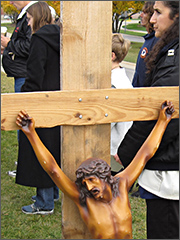
Incidentally, my father had no hand in the drafting of that statement (he was outside the meeting talking to a reporter at the time). But as PLAN’s media contact, it fell to him to explain what “pain” meant when reporters started asking him about it. What was meant, of course, was the “pain” of peaceful pro-life activism: the sit-ins, home pickets and prayer vigils listed in the release.
I say “of course” because both the League and PLAN were fully committed to non-violence. My father devoted a chapter to non-violence in his book, CLOSED: 99 Ways to Stop Abortion, published that same year of 1985.
The Pro-Life Action League remains committed to non-violence, and the claim that this year’s Lenten prayer campaign is “really” intended to intimidate or threaten the women we’re praying and fasting for is entirely unfounded.
Putting Violence in Perspective
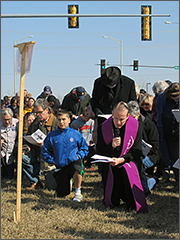
Advocates of legal abortion are quick to cite statistics about vandalism against abortion facilities and list the names of abortion providers killed and injured over the years. But they’re less willing to own up to the violence directed at pro-life activists.
Massey insists that “the argument that the violence is equal in volume, frequency and at similar levels of organization is specious,” noting that only one pro-life activist has been killed, compared to six abortion providers. I didn’t actually claim any parity of violence (actually, I’d argue far more nonlethal violence has been directed at pro-lifers), but to debunk the point would demand a lot more evidence than that.
But I can understand why our opponents beat this drum so loudly. It’s a lot easier to demonize pro-life activists than to defend abortion, which violently takes the lives of over 3,000 unborn children every single day.
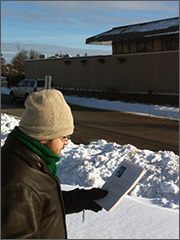
But never are these rare acts of anti-abortion violence juxtaposed with the overwhelmingly peaceful pro-life activism taking place day in, day out throughout the United States: the hundreds of marches, rallies and protests, and the countless hours of prayer and outreach on the sidewalks outside America’s abortion clinics.
Given how much pro-life activism is going on, and how high we think the stakes are here—literally a matter of life and death—it’s remarkable how very peaceful this movement truly is.
And why is it so? Because we pray. Like we’re doing now for Robin Marty, Katie Klabusich and Cheryl Chastine.
Choosing Our Words Carefully
Indeed, if “intimidation” were really our goal, this campaign would have to be considered pretty feckless. If this is really a “thinly veiled” call for violence, what, one wonders, would a “thickly veiled” one look like?
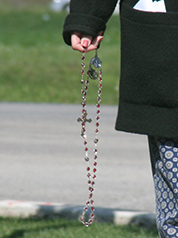
We called Cheryl Chastine an “abortionist,” rather than, say, a “baby killer” (a word choice nobody criticized; “abortionist” is merely accurate but carries a load of stigma).
No, the words and pictures in the League’s Facebook graphics bear no resemblance the “wanted poster” that Rev. Harry Knox of the Religious Coalition for Reproductive Choice tells Massey it’s meant to mimic.
A Challenge for the Pro-Choice Reverend
Knox’s comments in Massey’s article are particularly curious. He says the members of his coalition agree that “[neither] prayer nor scripture should ever be used as weapons”—which is true enough, but an odd thing to have to “agree” on.
Knox says further that “prayer should be entered into humbly, seeking the Holy One’s will and guidance, not assuming we already know what it is,” referring to my insistence that it is not God’s will for Marty, Klabusich and Chastine to be involved in abortion.
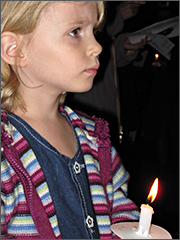
But here’s a thought experiment for Rev. Knox, and all of the League’s detractors: What would it look like if the League really were sincerely calling on pro-lifers to pray and fast for these three women?
I submit that it would like exactly like it does look, because that’s exactly what we really are doing.
Seeing Our Opponents as Loveable
We really mean it when we say, “God loves each of them—and so should we.” And at least one of our “targets” seems to get it. Robin Marty tells Massey:
By calling me a ‘pro-choice journalist’ I think that they were actually trying to make it understood that this wasn’t meant to be, at least towards me, a thing of harassment. I think that in a lot of ways they really, honestly, genuinely mean that people should pray for me cause I’m convertible.
Yes, I do believe that Marty is convertible. I sat with her at a hotel cafe for two hours last summer, talking about my work, and hers. She talked about her kids and why she’s so committed to “choice.” I talked about what it was like growing up as Joe Scheidler’s son, about my years as an atheist, and how I came back to Christian faith in my early 30s.
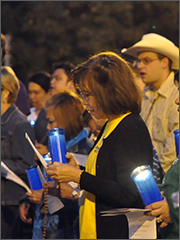
I can honestly say that I do like Robin Marty, as she surmises on her Facebook wall.
That means I’m all the more troubled by her advocacy for legal abortion. In my mind’s eye, I can catch a glimpse of the Robin Marty who refuses to accept a world in which the women for whom she so sincerely advocates cannot be truly free without the legal right to kill their own children.
Learning to Love Our Enemies
Katie Klabusich is another story. In an alternate universe in which I could sit down with her for coffee, maybe things would be different. But as it is, she’s harder to like.
Unlike Marty, who seems genuinely interested in representing us fairly in her work, Klabusich has been way over the top in her attacks on the League, as my mother noted in her blog post launching this campaign.
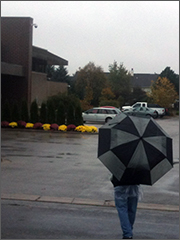
Still, Massey took me to task in our interview for the way my mother accused Klabusich of “spouting vitriol,” calling it a harsh way to speak of someone if we’re sincerely asking people to pray for her.
I responded that it’s necessary to recognize precisely how Klabusich ranks as an “enemy” of ours. Christ said, “Love your enemies and pray for those who persecute you.”
I believe that Christ meant this not just because our enemies need to be loved and prayed for, but perhaps even more importantly because we need to love them and pray for them, for our own good.
Transforming Our Own Hearts
This point is worth exploring further, since it’s an important part of the League’s Lenten prayer campaign.
In her first response on her blog to being “targeted” by our prayers, Klabusich quoted one Dianne Anderson, who—while accusing us of “weaponizing” Lent—actually raises a good point:
Lent, in my understanding, is not about working to convert others. It is not an evangelistic practice. It is primarily about internal, spiritual disciplines, the reworking of our own hearts.
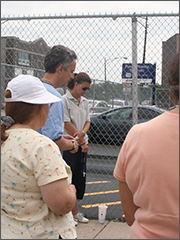
And that is part of what we’re trying to do here. Having sat down face-to-face with Robin Marty, it’s not hard for me to wish her well and pray for her in all sincerity. But to do the same for Katie Klabusich is difficult.
And that’s a shame. To the extent I do not wish her well and cannot pray for her with a heart full of love, I am falling short of my Christian vocation.
For me, this is where fasting becomes essential. A little physical suffering on someone’s behalf, chosen freely, makes it easier to love them.
Abortionists above All Need Our Prayers
That leaves Cheryl Chastine. She’s much more of a mystery. As Massey notes, Chastine initially hoped to remain anonymous as the new abortion provider at George Tiller’s old location in Wichita, Kansas—a naive hope, as I pointed out.
She’s not as “out there” as an abortion advocate as Marty and Klabusich are. Aside from her overactive Twitter feed and stories about the League’s efforts last year to get her to quit doing abortions, she doesn’t have much of a footprint online.
So then, why are we praying and fasting for Cheryl Chastine in this public way, and inviting others to do so, too? For two reasons.
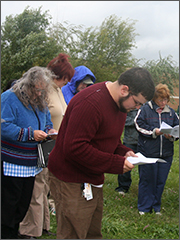
Chastine desperately needs prayers—as do all our nation’s abortionists. But it’s hard to pray for the Leroy Carharts and Kermit Gosnells of the world, and really mean it. We hope with this Lenten effort to deepen pro-lifers’ prayers for all America’s abortionists by focusing them, for a time, on this one young abortionist, who even now is only in her first year of aborting babies in Kansas.
This why we did not, as Massey proposes, “opt for a more general call to pray for those with whom they disagree during the season of Lent. Surely God already knows who the abortion providers and supporters are.”
Inciting Pro-Lifers to Pray
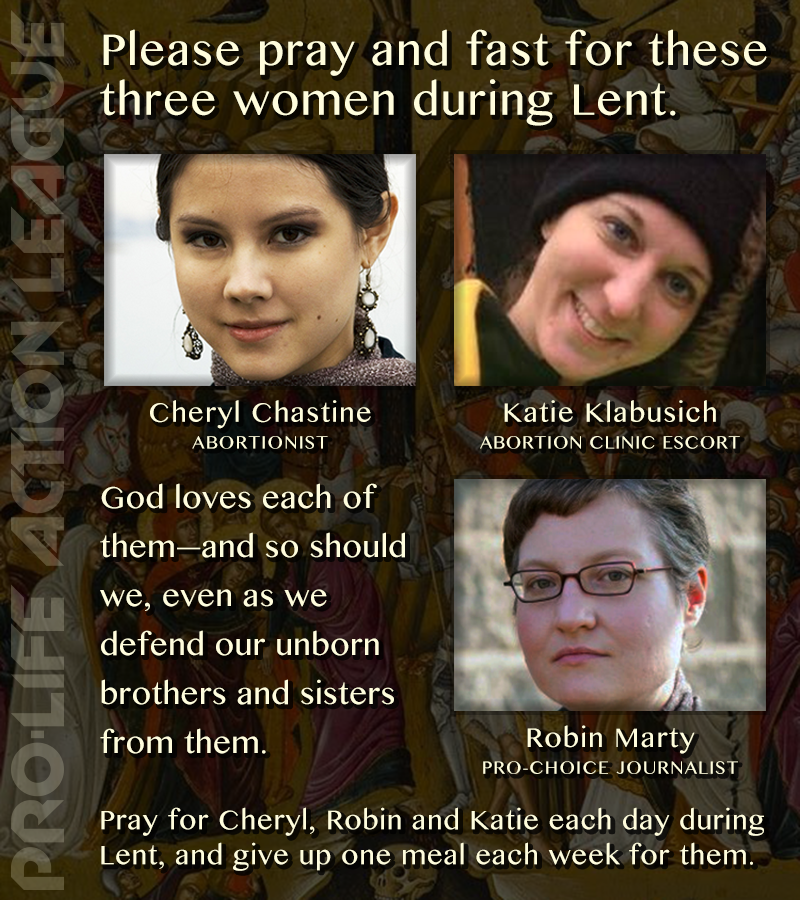
No, we’re not inciting anyone to violence, or trying to threaten or intimidate anyone. And the supporters, allies and followers of the Pro-Life Action League know that.
By the hundreds, they’re giving up meals and offering daily prayers for Robin Marty, Katie Klabusich and Cheryl Chastine. They’re printing out our Facebook graphic and putting it by their bedsides. They’re offering up Masses. One woman has even taken on a bread and water fast.
That’s our real agenda here, despite what the detractors may say: inciting people to pray.
